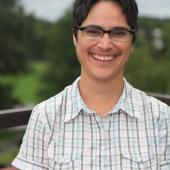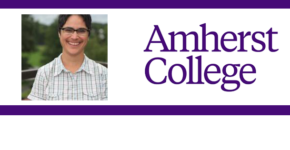 On Amherst College Week: How do we increase STEM enrollment for women and underrepresented minorities?
On Amherst College Week: How do we increase STEM enrollment for women and underrepresented minorities?
Sheila Jaswal, associate professor of chemistry, answers this question.
Sheila Jaswal is an associate professor of chemistry and member of the biophysics and biochemistry program at Amherst College. She attended Mills College in Oakland, Calif., where she graduated with a BA in biochemistry and German, then conducted research at the Max Planck Institute for Immunology in Freiburg, Germany, as a Fulbright Fellow. After receiving her PhD in biochemistry & molecular biology from the University of California at San Francisco, she served as a Damon Runyon Postdoctoral Research Fellow in the Department of Molecular Biophysics and Biochemistry at Yale University and a Senior Beckman Research Fellow at Stanford University. She joined the chemistry department at Amherst College in 2009 and has established an interdisciplinary research program with undergraduates combining the complementary strengths of experiments and theoretical modeling to discern fundamental principles of protein stability and dynamics. In 2016 she co-founded the Being Human in STEM (HSTEM) initiative with Amherst students, which aims to foster a more inclusive, supportive STEM community by helping students, faculty, and staff collaboratively develop a framework to understand and navigate diverse identities in the classroom, lab, and beyond.
Retention of Women and Underrepresented Minorities in STEM
For decades, higher ed has struggled—largely unsuccessfully—to enroll larger numbers of women and underrepresented minorities in the STEM fields of science, technology, engineering and math. This lack of diversity in STEM isn’t just an admissions challenge; it’s a retention one.
Inspired by students in our community —STEM majors and otherwise—who shared their experiences of marginalization during a 2015 sit-in in Amherst’s library, nine students and I developed the course “Being Human in STEM,” or HSTEM, in which participants review scientific literature on diversity in STEM, interview STEM students and then design possible interventions to try.
Evidence from the five semesters I’ve co-taught HSTEM has shown that students feel validated when they hear about experiences they share with classmates, learn about academic concepts such as stereotype threat and imposter syndrome and analyze data on representation, success and persistence. They feel included and proud when leading and contributing to STEM-related conversations and projects.
Since the course was conceived, more than 50 HSTEM participants majoring in 20-plus disciplines have used their findings to create guides for conducting workshops on diversity with STEM students and inclusive activities with children, a handbook on inclusive curricular practices, a documentary about HSTEM and a website sharing all resources. Our next step involves assessing whether numbers of students persisting in STEM have increased as a result of our efforts.
Our HSTEM model has been adopted by four other schools, and with great results. No doubt that’s because all of our conclusions have a common theme: Empowering students to investigate issues of inclusion instills a sense of shared responsibility for designing interventions that will work in their own STEM communities and beyond.
